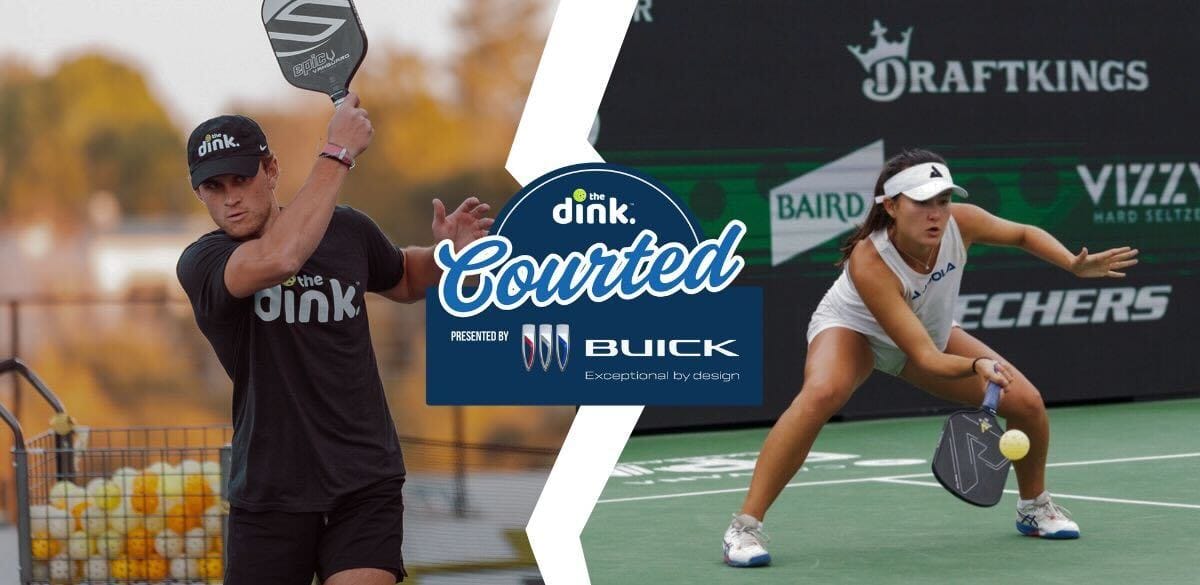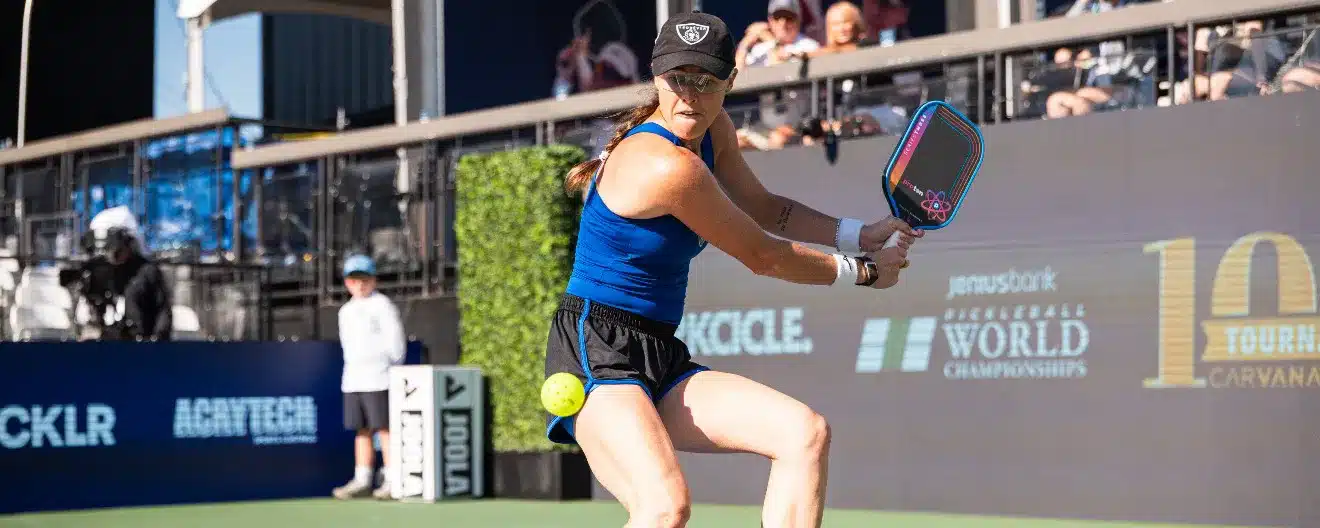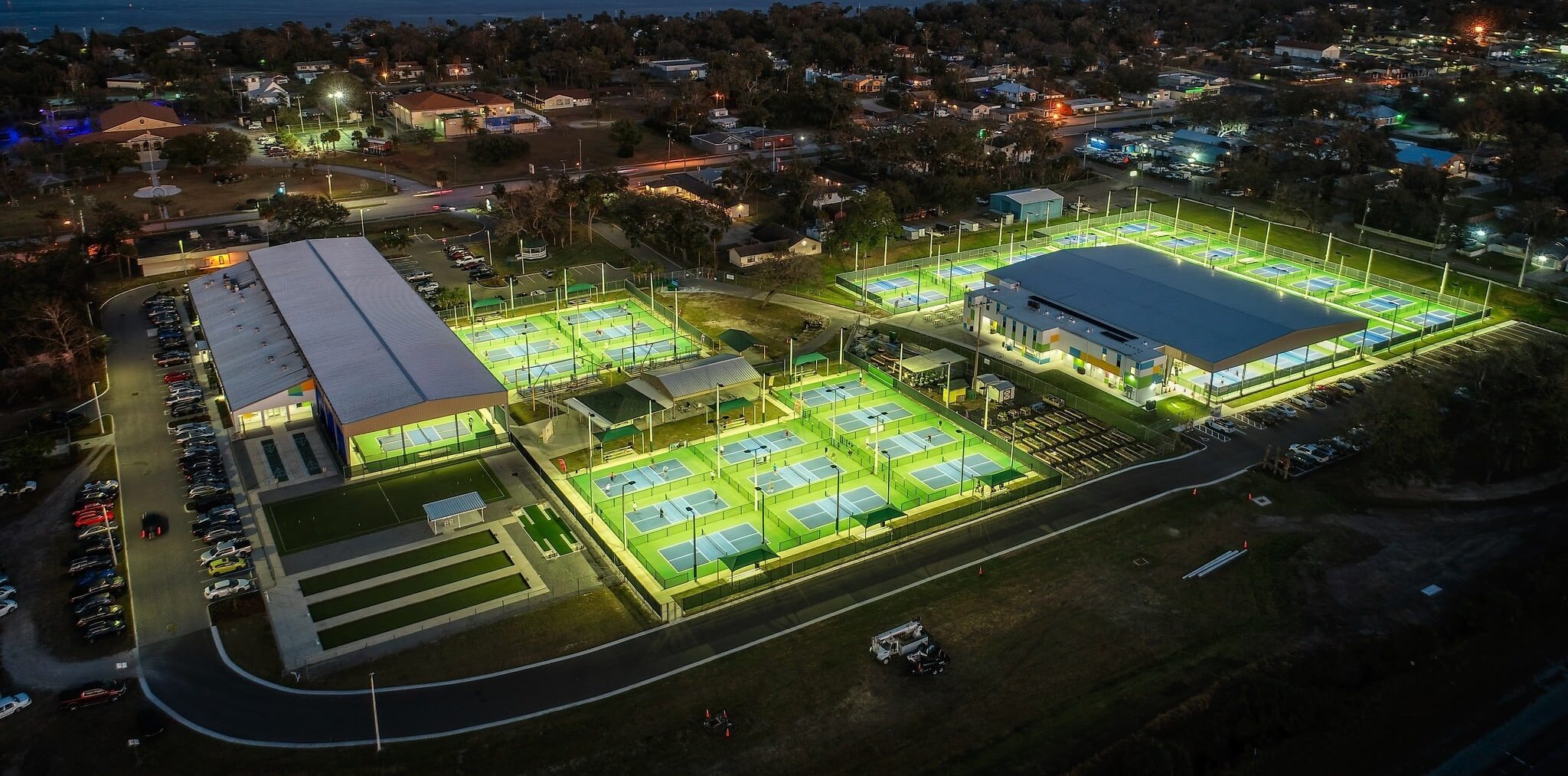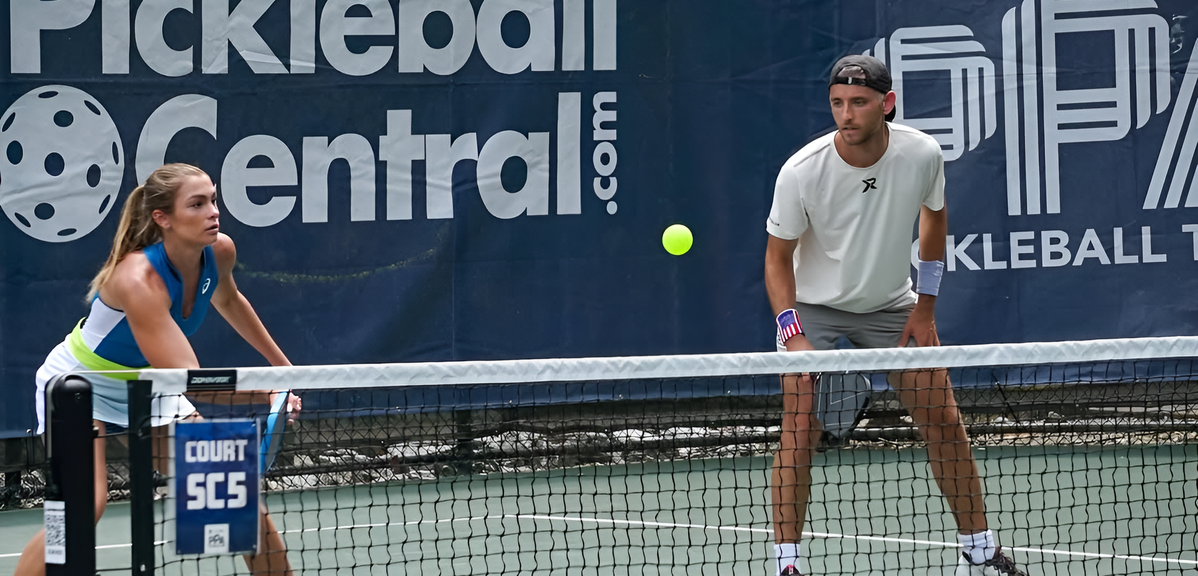Have you noticed that your pickleball performance is stagnating, but you can’t figure out why? Or, maybe you’ve noticed that your technique is perfect when you start playing but it deteriorates over time. More pickleball might not be the answer. What you need is cross-training.
Pickleball players can cross-train using weights to strengthen their muscles, bones, tendons, and ligaments. To improve endurance they can do drills on the court, swim, cycle, or use a rower. Core training exercises are also important to reduce injury and improve performance.
When designed properly, a cross-training program can make you a better pickleball player and reduce your risk for injury. In this article, you’ll learn why cross-training is important, how it improves performance, and which exercises are best for pickleball players.
Importance of Cross-Training for Improved Performance
The two priorities for cross-training are improving performance and reducing injury risk. However, if you pick the wrong exercise, you might be more likely to get injured. Proper cross-training doesn’t add to the stresses that pickleball places on your body. Rather, it prepares your body to better handle that stress.
Cross-training allows you to focus on any physical weaknesses you may have. Everyone has natural strengths and weaknesses, including things they carry over from other sports or workout programs. For example, you might be a runner with incredible stamina but lacking in core strength. Or, you could be a buff weightlifter who needs to improve their endurance and flexibility.
What Fitness Component is Most Applicable to the Game of Pickleball?
Pickleball is a blend of short-burst movements and endurance. You move quickly during a point then rest afterward, then repeat that pattern for the duration of a game. You need a blend of short-burst energy and long-lasting endurance to make sure you don’t lose strength and power over time.
It’s hard to put pickleball into a single fitness category. To sprint around the court quickly you need strong and powerful legs. To swing your paddle you need core muscles and upper body strength. However, games can last over an hour and you need enough endurance to keep playing at a high level.
Breaking up your training into specific fitness qualities, like strength and endurance, lets you put more energy into each. If you do strength and endurance training at the same time, chances are each one will take away from the other. Plus, if you feel that you need to work on strength or endurance separately you can do so.
5 Essential Cross-Training Exercises for Pickleball Enthusiasts
There are many exercises you can do for each area of fitness that relates to pickleball. Instead of listing them all out, this article will focus on a short list of exercises that have the biggest impact. If you stick with these you’ll see improvements in your pickleball game.
- Cardio Endurance - Running, cycling, rowing, and swimming are the best endurance exercises
- Strength Training - Leg exercises like lunges, upper body exercises like push-ups, and core exercises should all be in your program
- Flexibility and Balance - Yoga and Pilates are tried-and-true methods for improving flexibility and balance
- Agility and Quickness - Speed ladders and cones will help you get to the ball faster
- Reaction Time - Ball drop drills and partner reaction exercises will give you an edge over opponents
Cross-training exercises that make you better at pickleball fit into one of these 5 categories. Within each category are a few exercises that give you the biggest bang for your buck. You can design your workouts to target one of these qualities at a time or mix them to create time-efficient and performance-boosting workouts.
Exercise 1: Cardiovascular Endurance
Endurance training is important for pickleball players, but you have to pick the appropriate exercise. The priority is to make sure you won’t get injured. If you have pain from any of these exercises, switch to another.
Running
You can do either long-distance or sprint training for pickleball. If you feel that your speed is lacking, try doing short sprints with long rest periods in between. If you’re constantly winded and tired during matches, endurance training is probably better.
You don’t need to train like a marathon runner to get better. Keep the distance that you run to under 5 or 6 miles, because you probably won’t run more than that in total during a pickleball game. For sprints, do 30 seconds of all-out running followed by 4 minutes of rest, and repeat that 4-7 times.
Cycling
Cycling focuses on the leg muscles, which are used a lot in pickleball. Another benefit of cycling is that it's low-impact, which gives your body a break from the impact of running on a pickleball court.
You can cycle outdoors or inside on an exercise bike. Similar to running, you can do a long endurance workout or focus on short sprints. Keep endurance workouts shorter than an hour to prevent overtraining. For sprint workouts, you can do as few as 4 minutes total with a Tabata workout, which is 20 seconds of sprinting followed by 10 seconds of rest for 8 rounds.
Swimming
Similar to cycling, swimming is very low-impact. However, it strengthens your upper body much more than cycling or running. In one sense, it’s useful for cross-training because it gives your body a break from the stresses that pickleball places upon it. On the other hand, it might not have much carryover to pickleball performance because moving in water is very different from moving on a court.
If you feel like your upper-body strength is lagging behind your leg strength, swimming can help. It strengthens your shoulders, arms, and chest. Plus, since swimming isn’t very similar to pickleball, you don’t need to design your workouts around the days you play. You can play pickleball the day after swimming or vice-versa without risking injury.
Exercise 2: Strength Training
While you don’t need to have tons of muscle to play pickleball well, if you’re lacking in strength your performance will suffer. Your muscles help you run faster and hit with more power, both of which are very important qualities.
Lower Body
To strengthen your legs and improve performance, you should combine weight-lifting exercises with plyometrics. Squats and lunges are both essential movements for building strength and muscle. You can perform squats holding weights by your sides or on your shoulders to increase intensity. For lunges, hold a weight in each hand and take lunge steps forward until you’re tired or run out of room.
Strengthening your calves will improve your footwork and ability to take quick steps. Perform standing calf raises holding a weight in each hand to strengthen them.
Building strength with weights is important, but plyometric training shouldn’t be ignored if you want to get faster. Skater jumps are an excellent movement for pickleball players because they build your side-to-side speed. Jump side to side, landing on the outside foot before jumping onto the other leg, mimicking a speed skater.
Upper Body
Legs are important, but you still need upper body strength to swing your paddle. There are two simple bodyweight exercises you can add to your routine that will increase chest, arm, shoulder, and back strength: push-ups and pull-ups. They work opposing muscle groups, which makes them a perfect pairing in your workouts.
Resistance band exercises are excellent for shoulder health. With a light band, you can do exercises that strengthen the rotator cuff muscles, reducing your risk for injury. With heavier resistance bands you can strengthen your shoulder muscles, which are used for every type of shot in pickleball.
Medicine ball exercises allow you to strengthen your core and upper body at the same time. This is the closest you’ll get in upper-body workouts to playing pickleball. You can do a medicine ball slam by throwing it from over your head down to the ground. Or, you can toss it from your hip at a wall in front of you, incorporating your hips and core to produce as much power as possible.
How Do You Strengthen Your Arms for Pickleball?
You can strengthen your arms for pickleball with a combination of bodyweight and resistance exercises. Push-ups strengthen the triceps and chin-ups strengthen the biceps. Using weights you can add more exercises to your workouts, including bicep curls and tricep kickbacks.
If you’re new to pickleball and aren’t doing any strength training, your arms might get stronger simply by playing. At a certain point, they’ll stop adapting and you’ll need to use some form of resistance training.
While bodyweight exercises can be used to increase strength, they might not be the best option. It’s harder to match the difficulty of a bodyweight exercise to your ability level than it is to pick the perfect weight for an exercise.
Exercise 3: Flexibility & Balance
Pickleball might seem vastly different from yoga or Pilates, but there are many similarities. Balance and flexibility are required in both. When you stretch to return a shot, you need the flexibility to avoid getting injured. You also use balance constantly when playing pickleball to hit shots from a solid foundation.
Yoga
If you have tight muscles, flexibility is one of the most important things to focus on in cross-training. You might not notice how much your muscles stretch when playing, but tight calves or leg muscles can lead to an injury down the road.
Yoga gives you the opportunity to build strength and flexibility at the same time. The triangle pose, for example, opens up your hips and improves your balance while strengthening your legs. Cobra pose stretches your abdominals and lower back while strengthening your arms and shoulders.
Similar to swimming, you can incorporate yoga into your routine within a day of playing pickleball. It’s very low-impact and can be considered a form of recovery for your muscles, so you don’t need to worry about over-training.
Pilates
Pilates is a combination of core and hip strengthening that pickleball players can use to supplement their strength training. Particularly for those with lower back pain, the core strengthening aspect of Pilates has a carryover to pickleball.
Another benefit of Pilates is that it builds the muscles you need for proper posture. You’ll learn more body awareness that can help you when you’re learning a new technique or trying to figure out why your shots aren’t landing in the right place.
One Pilates exercise that you should try is the rotating plank. Start in a front plank position on both forearms, then rotate one arm up towards the ceiling. Then, return to the front plank before switching arms. Another move to try is the glute bridge for hip strength. Lie on your back with both feet planted and lift your hips as high as you can before returning to the ground.
What Stretching Exercises Should You Do Before You Play Pickleball?
Before playing pickleball, you should do dynamic warm-up exercises that prepare you to play. Lunges with a rotation will warm up your legs and core. Arm circles prepare your shoulders and arms to play. Add in the inchworm exercise and you’ll have stretched most of the major muscles in your body.
Each of those warm-up exercises is an example of a dynamic warm-up. Essentially that just means you’re stretching while moving, which preps your body to play better than static stretching. These dynamic movements all target different areas of the body while warming you up by getting you moving.
One of the most important aspects of a pre-pickleball routine is that you increase the temperature of your muscles, making them more elastic. Dynamic warm-ups are also superior because they enhance your performance more than static stretching.
Exercise 4: Agility & Quickness
Pickleball games move quickly since the courts are smaller than comparable racket sports like tennis. When competing in such close quarters, there’s not much time to react. Improving your agility and quickness is essential for competitive pickleball players.
Ladder Drills
Speed ladders have been used for decades to improve the footwork of athletes from many sports. They’re a simple piece of equipment and are very easy to transport, meaning you can even use them before or after you play.
There are several drills you can do with speed ladders to improve your foot speed, balance, and coordination. Try the two-in-two-out drill, hopping both feet in and out of the ladder as you traverse sideways. Or you can do single-leg hops, where you hop forwards or sideways through the ladder on one foot.
Keep in mind that ladder drills are relatively high-impact and increase the strain placed on your feet, shins, ankles, knees, and hips. If you have pain or soreness in any of these areas, skip the speed ladder drills until you’re recovered.
Cone Drills
Cone drills, when set up properly, very closely mimic the movements you’ll do in pickleball. You’ll develop agility and excellent side-to-side movement with cone drills. Plus, they give you the chance to further perfect your footwork.
To do pickleball-specific cone drills, take the cones onto the court. You can put three cones on the kitchen line, one at the center and two on either side. Then, facing the net, side shuffle from the center to the side, then to the other side, as fast as possible.
If you want more of a challenge, set up 5 cones in an “M” shape with two on the baseline, two on the kitchen line, and one in the middle of the court. Facing forwards, run the cones following the shape of the “M”.
Exercise 5: Reaction Time
Reaction time isn’t something you’re born with, you can develop it through practice. By improving your reaction time you can get to balls faster, reducing the number of winners your opponent can hit by you.
Ball Drop Drills
Ball drop drills combine reaction time and speed. They’re very similar to the reactions you need in pickleball, responding to the movement of the ball with action. In pickleball, getting to a shot early gives you time to set up and hit back with proper technique.
With a partner, it’s easy to do ball drop drills. Have your partner stand 10 feet in front of you, holding a ball shoulder height. When they release the ball, sprint forwards and try to catch it before it bounces twice.
To make this drill more challenging, you can start on one knee or you can lay on your stomach. Another option is to have your partner stand back further, increasing the distance you have to run.
Partner Drills
With a partner, you can do other reaction drills that are more exciting than training alone. In pickleball you’ll be reacting to what your opponent is doing, so it makes sense to train with a partner.
One drill you can do is have your partner serve from the net. By serving so close to you, the ball is going to come much faster and you’ll have less time to react. Then, in a game, it’ll seem like a breeze when you’re returning regular serves.
Creating Your Cross-Training Plan
Now it’s time to bring everything together and create a cross-training plan. The first step is to map out when you’re playing pickleball because cross-training shouldn’t interfere with practice or matches.
Schedule any intense weight training or cardiovascular workouts with a day of rest between the workout and pickleball. You can, however, do flexibility or reaction training a day before or after playing.
You should also aim to leave a day of rest between muscle groups. If you do a leg strength workout, don’t do sprints the day after. Instead, opt for something that works the upper body. A sample routine looks like this:
- Monday: Pickleball drills and practice
- Tuesday: Yoga or Pilates
- Wednesday: Competitive Pickleball
- Thursday: Rest
- Friday: Full-body strength workout
- Saturday: Swimming workout
- Sunday: Rest
Improve Your Game Off the Court
Pickleball combines many forms of fitness into one fast-paced sport. You can use pickleball as a form of fitness to replace boring gym workouts, but at a certain point, it helps to train your body off the court.
To give your body a break from the rigors of pickleball, add cross-training to your weekly schedule. It’s the fastest way to improve your pickleball performance outside of actually playing. Plus, it can help you avoid injuries and keep your body healthy.
As with anything, consistency is key. Figuring out a way to harmoniously blend your cross-training and pickleball playing is the key to long-term success. By finding the correct balance, you can grow as a pickleball player and stay healthy for years to come.
FAQs
1. How often should I cross-train for pickleball?
Cross-training depends on your pickleball schedule. You should be able to cross-train while maintaining one or two rest days per week at a minimum, to make sure your body can recover. Even one extra day per week of cross-training is helpful, but aim for 2-3 if you can.
2. Can I cross-train on the same day as my pickleball practice?
Depending on the type of cross-training you’re doing, you can combine it with pickleball. Yoga is perfect for the days you play pickleball because it’s low-impact and can even prepare you for practice. Another option is to add agility drills or reaction drills to your practice, honing your pickleball technique and improving quickness all at once.
3. Are these exercises suitable for all skill levels?
Each cross-training exercise is scalable. For example, when you’re doing resistance training, you can lower the amount of weight or reps you’re doing. Or, if you’re running, you can limit the distance you travel or alternate running with walking when you get tired. You should never feel the need to push yourself too far beyond your comfort zone.
4. How can I track my progress in cross-training?
With weight training or endurance training, it’s easy to track progress. You can track the number of reps you’re doing, the amount of weight you’re using, or the distance you’re traveling. With yoga and Pilates, it’s more complicated since progress is subjective. Another way to track progress is by paying attention to how you feel while playing pickleball.
5. How do I prevent injuries while cross-training for pickleball?
Since part of the reason why you’re cross-training is to avoid injuries, it would be completely counterproductive to get injured while cross-training. The first step to avoiding injury is to distinguish the normal discomfort you feel from exercising from pain, which is a sign that something’s wrong. If you feel pain, stop doing whatever movement hurts. You should also include rest days in your program to give your body time to recover.
Anuncie Aqui / Advertise Here
Sua marca para o mundo Pickleball! / Your brand for the Pickleball world!

 English
English  Spanish
Spanish  Portuguese
Portuguese  German
German  Italian
Italian  Japanese
Japanese  French
French  Polish
Polish  Russian
Russian  Netherlands
Netherlands  Hungarian
Hungarian  Turkish
Turkish  Videos
Videos 








 English (US) ·
English (US) ·  Portuguese (BR) ·
Portuguese (BR) ·